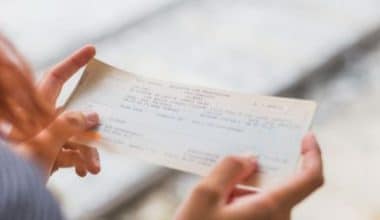When a firm evaluates its financial status, a financial analyst may compute the total amounts stored in the company’s asset accounts. While financial data on these accounts may contain collected receivables, the company might alternatively choose to incorporate its contra-asset accounts as a separate line item on the balance sheet. Similarly, if the contra-asset account has a low balance, the corporation may choose to merge the sums in both its contra and fixed-asset accounts. Here, we’ll explain what a contra-asset account is with an example, and accumulated depreciation as a type of contra-asset account.
What Is A Contra Asset Account?
A contra-asset account is a form of asset account in which the account balance can be either negative or zero. This sort of asset account is called “contra” because standard asset accounts can have a debit, or positive, balance, whereas contra asset accounts can have a credit, or negative, value. Because these asset accounts are opposed, the contra account works as a ‘contrary’ aspect to the debit balances of ordinary asset accounts. Furthermore, because equalizing an asset account and a contra asset account results in the asset’s net, or total, balance, a contra asset account may also be considered a negative asset account.
On a company’s balance sheet, this sort of account can equalize balances in the asset account with which it is coupled. Credited balances in the contra asset account can be used to reduce the balance in the matched asset account. A corporation can opt to report this information as separate line items on its balance sheet so that financial planners or analysts can determine how much a paired asset can be lowered.
How Contra Asset Accounts Work
Contra asset accounts are excellent double-entry accounting tools. They are also useful for maintaining financial balance and generating a clear trail of financial breadcrumbs for historical examination and reporting. When it comes to fixed assets, it is usual practice to preserve the purchase price of a piece of equipment as a historical cost in the debit asset account.
Most accountants keep track of an item’s depreciation over its useful life in the accumulated depreciation contra-asset account, which is a credit account. The balance sheet would display the asset at its historical cost, then remove the accumulated depreciation to reflect the asset’s true value.
Example Of Contra Asset Account
Allowance for dubious accounts and cumulative depreciation are two key instances of counter-asset accounts. Allowance for doubtful accounts reduces accounts receivable, whereas accumulated depreciation lowers the value of a fixed asset.
What Are The Different Types Of Contra Asset Accounts
A corporation may utilize a combination of asset accounts, and the six types of contra-asset accounts listed below can be used in conjunction with these fixed and current asset accounts.
#1. Accumulated Depreciation
An accumulated depreciation account is a form of contra asset account used to record the amount of depreciation that a fixed asset experiences. An accumulated depreciation account, for example, might highlight a fixed asset such as machinery, a corporate building, office equipment, automobiles, or even office furniture. This amount may appear on a company’s balance sheet, resulting in a reduction in the gross amount of a company’s fixed assets.
#2. Accumulated Depletion
Another popular sort of counter asset account is accumulated depletion, which allows a corporation to view the number of depletion charges that it has incurred over time for the usage of corporate equipment, tools, or other business resources required for procedures and operations. On the balance sheet, this sum is often matched with the company’s current assets.
#3. Obsolete inventory
Obsolete inventory is defined as a company’s products or goods that have become obsolete, or unusable, as a result of routine use and operations. In most cases, this form of contra asset account is debited for expenses, followed by a credit to the company’s contra asset account for recording unusable inventory. Similarly, if the inventory has been totally phased out, a company may deduct these types of charges from its financial records. The contra asset account can also be linked with a current inventory account to allow a financial analyst to calculate the current market worth of the company’s inventory.
#4. Allowance for doubtful accounts
Allowance for doubtful accounts, or ADA for short, is a form of contra asset account intended to generate an allowance for clients who acquire products or services and then fail to pay the amount owed. This account may also appear on a company’s balance sheet, and the provision for dubious accounts may result in less receivables.
#5. Trade accounts receivable
A trade account receivable is an amount that a corporation bills to its customers when it delivers goods or services. These billings are typically documented on invoices, which are subsequently summarized in an aging report for all accounts receivable for the business.
#6. Discount on notes receivable
A discount on notes receivable is a counter asset account that happens when the current value of a note receivable is less than its face value. The resulting credit balances in these accounts are typically amortized as interest revenue over the note’s viable duration.
Justifications for Including Contra Asset Accounts On A Balance Sheet
Even if a contra asset account has negative or zero credit balances, it can still be beneficial for firms to reflect whatever contra asset accounts they currently have on their balance sheets. The following are numerous significant reasons why contra asset accounts should be included on a balance sheet.
- Financial counselors and planners can see an organization’s asset accumulation.
- The amount of depreciation on an asset can be determined using balance-sheet data.
- The counter asset account, in conjunction with the conventional asset accounting, can illustrate the purchase price and market value of a company’s current assets.
- Contra asset accounts may also show an asset’s remaining value or functional life.
- In double-entry accounting, a contra asset is a negative account used to reduce the balance of a matched asset account in the general ledger.
- Discover why contra accounts, when used appropriately in conjunction with a matched account, are an essential component of accurate accounting and financial review.
What Is Accumulated Depreciation?
Accumulated depreciation is the accumulation of an asset’s depreciation up to a single point in its life. Accumulated depreciation is a contra-asset account. This means that its natural balance is a credit that reduces the asset’s overall value.
Understanding Accumulated Depreciation As A Contra Asset Account
According to generally accepted accounting standards (GAAP), expenses must be matched to the same accounting period in which corresponding revenue is earned. A business will depreciate a percentage of the value of a capital asset over each year of its useful life. This means that when a capitalized asset is used and generates income, the cost of depleting the asset is recorded.
Accumulated depreciation is the total amount depreciated on an asset up until a single point. The depreciation expense reported in that period is added to the beginning cumulative depreciation balance each period. On the balance sheet, the carrying value of an asset is the difference between its historical cost and the accumulated depreciation. When an asset reaches the end of its useful life, its balance sheet carrying value will equal its salvage value.
A corporation debits depreciation expense and credits cumulative depreciation when recording depreciation in the general ledger. Depreciation expense is reported in the income statement in the period in which it occurs. On the balance sheet, accumulated depreciation is shown underneath the line for related capitalized assets. The accumulated depreciation balance grows over time by adding the current period’s depreciation expense.
Calculating Accumulated Depreciation
There are various methods for estimating depreciation that are appropriate. These procedures are permitted by Generally Accepted Accounting Principles (GAAP). A corporation can choose which form of depreciation to use.
Straight Line Method
A depreciable base is determined by subtracting the asset’s salvage value from the purchase price using the straight-line method of accounting. The base is then accumulated evenly during the asset’s expected useful life. The straight-line method formula is as follows:
(Asset Value – Salvage Value) / Useful Life in Years = Annual Accumulated Depreciation
Imagine ABC purchases a building for $250,000. The building is projected to remain operational for 20 years and to be worth $10,000 at the end of that time. The building’s depreciable basis is $240,000 ($250,000 – $10,000). Every year for the next 20 years, the corporation would recognize $20,000 in accumulated depreciation.
Method of Declining Balance
Depreciation is calculated as a percentage of the asset’s current book value using the decreasing balance technique. Because the same percentage is applied each year, the amount of depreciation falls each year as the current book value decreases. While accumulated depreciation will continue to rise, the quantity of accumulated depreciation will fall each year.
Current Book Value * Annual Accumulated Depreciation Rate of Depreciation
Assume Company ABC purchases a company car for $10,000 with no salvage value at the end of its life. Every year, the corporation chose to depreciate 20% of its book value. In Year 1, Company ABC would recognize $2,000 in depreciation and compounded depreciation ($10,000 * 20%). Company ABC would earn $1,600 in Year 2 (($10,000 – $2,000) * 20%).
Method of Double-Declining Balance
A corporation uses the double-declining balance (also known as accelerated depreciation) to compute its depreciation under the straight-line approach. The corporation then doubles the depreciation rate, maintains this rate for the duration of the asset’s depreciation, and continues to accumulate depreciation until the salvage value is reached. The percentage is simply computed by dividing 100% by the number of years of usable life.
Rate of the Double-Declining Balance Method = (100% / Useful Life in Years) * 2
Depreciable Amount * Double-Declining Balance Method Rate of the Double-Declining Balance Method
Assume Company ABC buys a building for $250,000 with a salvage value of $10,000. Because the corporation recognized 5% (100% depreciation / 20 years) using the straight-line technique, it would utilize 10% as the depreciation basis for the double-declining balance method. In Year 1, the corporation would recognize $24,000 ($240,000 depreciable base * 10%) and $21,600 (($240,000 depreciable base – $24,000) * 10%).
Digits from the Year Sum Method
The sum-of-the-years’digits method encourages a corporation to report more depreciation early in an asset’s life and less later. This is accomplished by summing the digits of the useful years and then depreciating on that number of years.
Depreciable Base * (Inverse Year Number / Sum of Year Digits) = Annual Accumulated Depreciation
Company ABC purchased a piece of equipment with a 5-year useful life. The asset has a $15,000 depreciable base. Because the asset has a 5-year useful life, the sum of the year digits is 15 (5+4+3+2+1). The depreciation rate is then calculated by dividing the inverse year number (Year 1 = 5, Year 2 = 4, Year 3 = 3, etc.) by 15. In Year 1, the corporation will recognize $5,000 in depreciation ($15,000 * (5/15)) and $4,000 in depreciation ($15,000 * (4/15)) in Year 2.
Method of Production Units
A corporation assesses the overall useable output of an asset using the units of production approach. The corporation then examines how many of those units were consumed each year in order to recognize accumulated depreciation based on utilization. The units of production method formula is:
Annual Accumulated Depreciation = (Number of Consumed Units / Total Consumable Units) * Base Depreciation
For example, suppose a corporation purchases a company vehicle and intends to drive it 80,000 kilometers. The company drove the vehicle 8,000 miles in the first year. As a result, it would recognize 10% of the depreciable base (8,000 / 80,000). If the corporation travels 20,000 miles in the second year, it will recognize 25% of the depreciable base as a cost, with accumulated depreciation now equal to $28,000 ($8,000 in the first year + $20,000 in the second year).
Do Contra Accounts Have Debit Or Credit Balances?
Natural credit balances exist in contra assets. Contra assets, which are still recorded with other assets, have the opposite type of natural balance to assets, which generally have positive debit balances.
Where Do You Put Contra Assets?
Contra accounts appear on the same financial statement as the related account, usually directly below it, with a third line representing the net amount.
Do Contra Assets Go On The Balance Sheet?
Contra assets and contra liabilities are balance sheet accounts that have opposing balances to their linked accounts.
In Conclusion,
Contra accounts are used to directly lower the original account, which helps to maintain financial accounting records clear. This makes it simple to calculate past costs. This is especially true for contra asset accounts. The book value is the difference between an asset’s balance and the contra account asset balance.
- ACCUMULATED DEPRECIATION: Calculation & Examples
- DEPRECIATION ACCOUNTING: Definition, Methods, Formula & All You Should Know
- DEPRECIATION: Definition, How to Calculate It, and Causes.
- ACCUMULATED AMORTIZATION: Definition And All You Should Know






